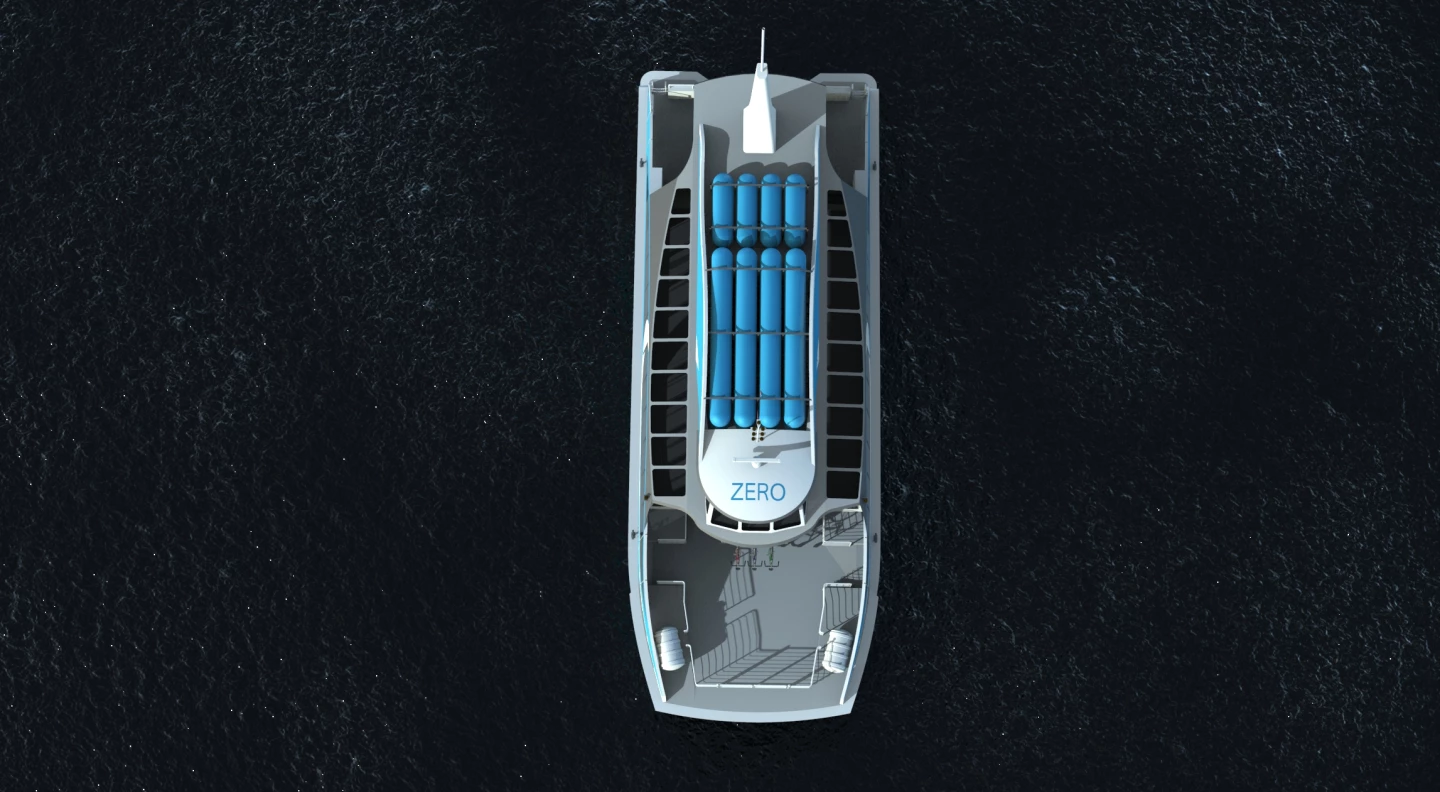Switch Maritime says its Sea Change ferry is nearly built and ready to go to work in the San Francisco Bay in Q3 this year. Powered by compressed hydrogen gas running through a fuel cell, it'll be the first of its kind, running for two days on a tank.
The Sea Change is a 72-ft (22-m) passenger ferry, a marine-grade aluminum catamaran capable of carrying 84 passengers. Its twin 300-kilowatt (400-hp) electric motors will propel it to a top speed of 22 knots (25 mph/41 km/h).
As we discussed yesterday with the Candela C7 "flying boat," hydrodynamic drag is an absolute killer for battery-electric boat range figures. These things need to store a lot of energy to push through the water – and that's why hydrogen is shaping up as a promising fuel for medium-range marine applications, much like it is in aviation.
The Sea Change will carry some 246 kg (542 lb) of gaseous hydrogen, compressed at 250 bar (~3,600 psi) in its tanks. A large PEM fuel cell will convert that hydrogen into electricity at rates up to 360 kW, and a lithium battery pack will offer 100 kWh of buffer energy that can also be used to boost the ferry to full speed when needed.

That 246 kg of hydrogen represents about 8.3 megawatt-hours of stored energy – hydrogen stores about 33.6 kWh per kg. And although fuel cells are typically only around 50 percent efficient at converting that back into electrical energy, it's enough that the Sea Change will operate for two full days before it needs a top up.
The Sea Change will be a technology demonstration platform for the Water-Go-Round project. It'll do a three-month data collection period for the California Air Resources Board and will then be leased to an existing ferry operator to commence full commercial operations, becoming the world's first commercially active hydrogen fuel cell ferry in the process.
Not far behind it will be the MF Hydra from Norse Group, an even larger ferry that should offer considerably longer endurance, since it'll run on cryogenic liquid hydrogen, which offers even greater energy density than gaseous hydrogen.
Check out a video below.
Sources: Switch Marine, Water-Go-Round









